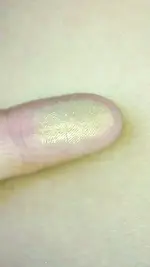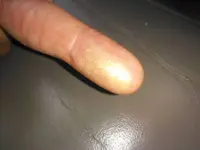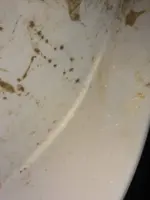Ive read and skimmed this post a few times while searching on various topics. One thing I would like to know is what is gold dust? By the old timers reckoning. When you read old narratives (gold rush era) referencing "gold dust".
"...worked the vein and ground out gold dust..."
"...bags of gold dust..."
What do they really mean? What particle size are they referring to? What size could they reliably recover using period methods?
Its conceivable to me that gold can exist in a very finely divided dist like state originating from hard rock deposits. The natural processes that grow placer gold is usually an independent process separate from the ore-genesis processes that precipitate hard rock gold.
http://www.treasurenet.com/forums/g...gold-formation-your-thoughts-experiences.html
There are many way gold can precipitate/ form. This is based on on observations and experiences in my district. I imagine a homogeneous hydro thermal solution circulating at high temperature and pressure. At the high temperatures and pressures various percentages of silicon, sulfur, iron, copper, lead, silver, and gold exist in a dissolved homogeneous state. The earth fractures and opens rapidly along a fault and the homogeneous high temperature/ pressure hydro thermal solution rushes in to fill the void. The sudden drop it pressure leads to a sudden temperature change quickly cooling the solution. Based on the specific heat of the different minerals, how quickly the pressure drops, different metals/ minerals will come out of solution and crystallize at different rates. The slower the cooling/ pressure drop the longer the minerals / metals have time to conglomerate come out of solution, and form distinct separate particles/ layers. The quicker the pressures drops and the more rapidly it cools the more homogeneous and finely divided the minerals will be. Just as there will be a difference if you rapidly quench or slowly cool hot steel. Different crystalline structure, giving it different physical properties. I hypothesize that's often the reason why hard rock gold deposits have such a range in particle size.
Slow cooling allows minerals/ metals to separate more distinctly and crystallize into larger formations
Conversely rapid cooling does not allow minerals to separate out as distinctly. If gold was precipitated from solution rapidly because of a sudden temperature/ pressure drop of a hydrothermal solution it stands to reason that the gold will exist as small particles in a highly divided state that didn't have time to combine.
An interesting experiment would be to super heat an aqueous of various gold containing solutions under immense temperature and pressure (thousands of degrees) then rapidly drop the pressure and experiement with the variable to see what happens.








